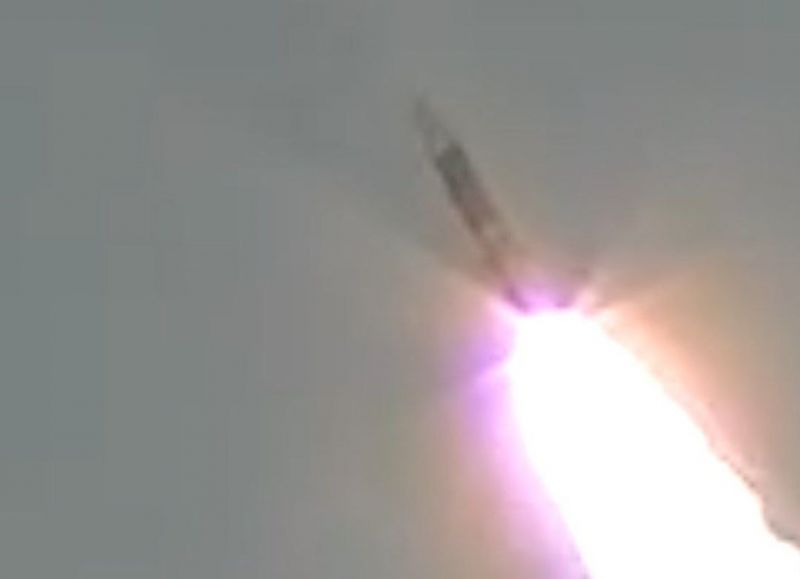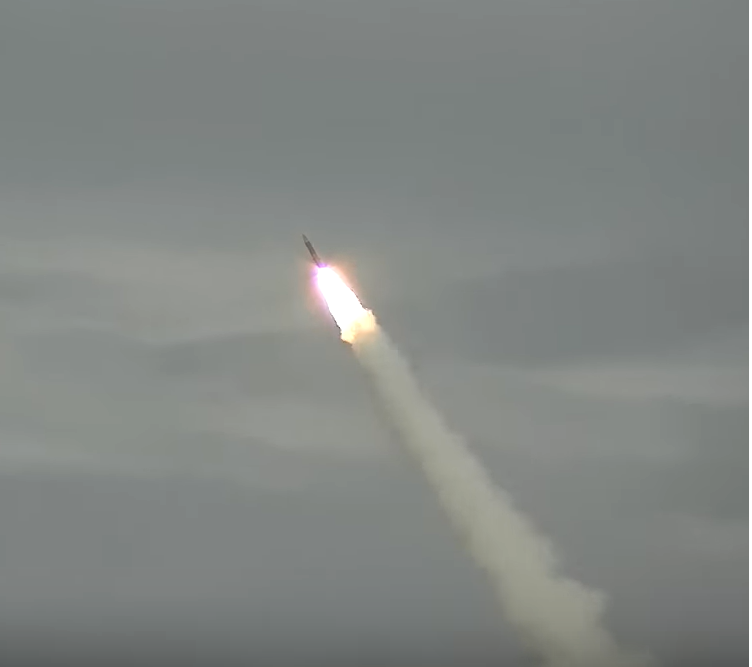As I understand it the rocket motor and scramjet get it up to its 'traveling' height, does it then fly on a ballistic trajectory or flat?
Think of it as being an aircraft whose engines are designed to operate only at speeds above 200km/h... so a solid rocket motor is used to accelerate and climb from its launch position where its scramjet can be started to then accelerate and climb and then fly all the way to the target.
It is not a ballistic missile, more of a cruise missile.
Is the 'traveling' height always 30km+?
There would be no value in sea skimming because that would greatly increase fuel burn and reduce top speed which would dramatically reduce range and performance.
Can it change direction during that phase or is it going too fast?
How fast would it need to go before it was too fast to change direction?
Some of the fastest missiles around are the ABM missiles the Russians use in the ABM system around Moscow... missiles that travel much faster than the 3km/s that Zircon can manage, though they are all solid rocket... but even then if it can't manouver then how could it hit an incoming target?
When it gets to the target area has it already started to slow down so that it can change trajectory to vertical?
It is powered all the way, any speed lost will be recovered in the dive to the target...
Once vertical is it going slow enough to maneuver?
Why do you think it needs to slow down to manouver?
When we say manouver... we don't mean performing loops and 90 degree turns...
A ten degree turn to the left... project an intercept point three kilometres in front of you, then turn ten degrees back to where you were headed originally and go another ten degrees to your right... how far apart are those points... before you turned the interception missiles were headed to a point in space... a turn of 10 degrees and that intercept point shifted quite a distance... remember if the interceptor is 5 seconds away from the interception point, turning 10 degrees shifts that interception point, but the interception network has to measure the turn... they don't know how far you have turned and it will take a second or two before they can determine you turned 10 degrees and then stopped turning, so the new interception point has just moved several kilometres, so your missile doesn't get any extra time, so the new intercept point has moved several kilometres but the time it will take your missile to get to the new interception point means it cannot make it, because the interception missile would also lose speed in its turn and it is now 2 seconds from the old interception point... it might not even be capable of turning to the new intercept point but even starting to try will be very frustrating when they detect the incoming missile has now not only returned to its original course but turned a further ten degrees the other direction, so your intercepting missile lost energy starting to turn that it wont even make the original intercept point now because there is not time to turn back, and even if it could the new intercept point is x times 2 because it is headed in a different direction.
But that is just being simple... imagine if the incoming missile continuously flew in a random spiral always changing heading and direction... the interceptors likely wont be based directly at the target so the incoming missiles will not get very close to the launch position of the interceptors and make it a little easier by shortening the times of flight.
If the zircon follows a ballistic trajectory, what makes it different from the iskander, kinzhal, kh-32, etc other than higher speed?
What an amusing comment... you are correct... but you use terrible examples... Iskander and Kinzhal are rocket boosted ramjet powered missiles that are cruise missiles and not ballistic, while the Kh-32 is a liquid fuelled rocket powered cruise missile.
The Tochka is a ballistic rocket, as are Smerch and Uragan and Grad rockets.
It's not a ballistic missile if you think so. A BM, to reach its mach 10 speed, would need to go very high, much higher than 30km.
Being ballistic does not relate to speed or altitude... the space shuttle leaves earths atmosphere but is not ballistic... it is more of a hypersonic glider.
Ballistic means like a thrown rock... you accelerate the object to speed either down the barrel of a gun or in the case of a rocket, a rocket motor that burns for a period only to accelerate and climb and then burns out... then without wings... the ballistic object then follows a predictable...Ballistic... trajectory that can be calculated based on the mass and speed and altitude and flight direction of the object.
These weapons that have been mentioned are powered all the way to the target missiles that do not follow a predictable ballistic flight path.
But otherwise I agree mostly with what you said LSOS.
There are rumors it sheds its air breathing elements during terminal phase. But this is speculation based on interpretations of patent info that may have no relation to zircon.
Sounds unlikely because the scramjet engine running all the way to impact would increase its ability to manuover and maximise its speed at impact.
But highlights the fact that we really don't know much for sure.


 Arrow
Arrow




